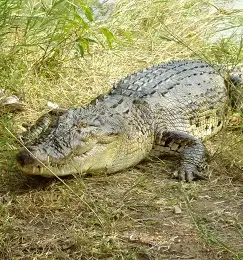Sundarban - A Natural Wonder
The Sundarban, located in the southern region of Bangladesh and the Indian state of West Bengal, is a remarkable natural wonder that holds immense ecological and cultural significance. This vast mangrove forest is globally recognized for its unique biodiversity and has been designated as a UNESCO World Heritage Site.
Geographical Features
Spanning approximately 10,000 square kilometers, the Sundarban is the largest mangrove forest in the world. The name "Sundarban" can be translated to "beautiful forest" in the Bengali language, perfectly capturing the essence of this breathtaking ecosystem. The region is intersected by a complex network of rivers, creeks, and tidal channels, creating a dynamic landscape influenced by the ebb and flow of tides.
Flora and Fauna
The Sundarban is home to a rich variety of flora and fauna, adapted to survive in the brackish waters and saline conditions of the mangrove habitat. The dominant mangrove species found here is the Sundari tree (Heritiera fomes), which lends its name to the entire forest. These mangroves act as a natural shield, protecting the land from erosion caused by tidal movements.
The Sundarban is renowned for its population of Royal Bengal Tigers (Panthera tigris tigris). These majestic creatures, with their distinctive stripes, are a symbol of the region's biodiversity. Apart from tigers, the Sundarban is inhabited by other wildlife species, including estuarine crocodiles, Indian pythons, spotted deer, fishing cats, and numerous bird species.
Importance of the Sundarban
The Sundarban plays a crucial role in maintaining the ecological balance of the region and serves as a natural barrier against cyclones and tidal surges. The mangroves act as a nursery for various marine species, providing them with a safe haven for breeding and feeding. The forest also acts as a carbon sink, helping mitigate the effects of climate change.
Human Interaction and Conservation
The Sundarban is not only a sanctuary for wildlife but is also home to a significant human population. The local communities, known as the "Munda" and "Bawali" tribes, have adapted to the challenging conditions of the mangrove environment. They rely on fishing, honey collection, and agriculture for their livelihoods, maintaining a delicate balance between human needs and conservation efforts.
Efforts are being made by both Bangladesh and India to protect and preserve the Sundarban. National parks, wildlife sanctuaries, and protected areas have been established to safeguard the unique biodiversity of the region. These conservation initiatives aim to raise awareness, promote sustainable tourism, and ensure the long-term survival of the Sundarban.
Tourism in the Sundarban
The Sundarban attracts tourists from around the world who are captivated by its natural beauty and the opportunity to witness its incredible wildlife. Tourists can explore the forest through guided boat safaris, immersing themselves in the tranquility of the mangrove ecosystem. The thrill of spotting a Royal Bengal Tiger or observing a crocodile basking in the sun is an experience that leaves a lasting impression.
Visitors can also engage with the local communities, gaining insights into their traditional lifestyle and cultural practices. The Sundarban offers a unique blend of adventure, education, and relaxation, making it a must-visit destination for nature enthusiasts and eco-travelers.
Animals In Sundarban
The Sundarbans, with its diverse ecosystem, is home to a rich array of animal species. From majestic predators to fascinating reptiles and vibrant birdlife, the Sundarbans showcases a remarkable biodiversity. Here are some of the notable animals found in the Sundarbans:
Royal Bengal Tiger: The Sundarbans is famous for its population of Royal Bengal Tigers (Panthera tigris tigris). These magnificent big cats are adapted to the mangrove environment and are skilled swimmers. Although elusive, spotting a tiger in the Sundarbans is a thrilling experience and a testament to the region's importance for tiger conservation.
Estuarine Crocodile: The Sundarbans is home to the estuarine crocodile (Crocodylus porosus), also known as the saltwater crocodile. These massive reptiles can be found in the waterways and mudflats of the mangrove forests. They are excellent swimmers and play a vital role in maintaining the ecological balance of the Sundarbans.
Indian Python: The Sundarbans is inhabited by the Indian python (Python molurus), a non-venomous snake species. These impressive constrictors can grow to significant lengths and are known for their ability to camouflage within the dense vegetation of the mangroves.
Fishing Cat: The fishing cat (Prionailurus viverrinus) is a medium-sized wildcat species found in the Sundarbans. As the name suggests, these feline predators are skilled fishermen, adept at hunting fish and other aquatic prey. They have adapted to the mangrove habitat and are excellent swimmers.
Spotted Deer: Spotted deer (Axis axis) are commonly sighted herbivores in the Sundarbans. These graceful creatures, with their distinctive spotted coats, graze in the grassy areas and forest clearings. They form an important prey base for predators like tigers and provide a beautiful sight for visitors.
Rhesus Macaque: Rhesus macaques (Macaca mulatta) are a common sight in the Sundarbans. These intelligent and highly adaptable primates can be seen swinging through the trees and foraging on fruits and leaves. Their presence adds to the rich diversity of wildlife in the mangrove forests.
Birds: The Sundarbans is a haven for birdwatchers, boasting over 300 avian species. Migratory birds visit during the winter months, while resident species can be found throughout the year. Some notable birds include the white-bellied sea eagle, osprey, kingfishers, herons, egrets, and the elusive masked finfoot.
Other Wildlife: The Sundarbans is also home to other fascinating animals such as wild boars, Indian foxes, otters, monitor lizards, and various species of snakes. The mangrove habitat provides a unique ecosystem where these creatures thrive and contribute to the overall biodiversity.
It is important to note that the Sundarbans is a protected area, and encountering wildlife should always be done with caution and respect for their natural habitat. Safaris and guided tours offer opportunities to observe these animals in a responsible and sustainable manner, ensuring their conservation for future generations to enjoy.










Book Your Sundarban Adventure Tour
It's time to answer the call of the wild and venture into the Sundarban with us. Let Sundarban Bina Travels be your trusted companion on this extraordinary expedition. Whether you're a nature lover, wildlife enthusiast, or simply seeking an escape into nature's embrace, we have the perfect Sundarban tour package for you. Come, let's explore the Sundarban together and create memories that will last a lifetime.